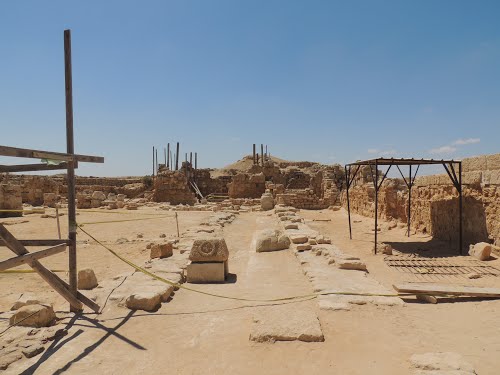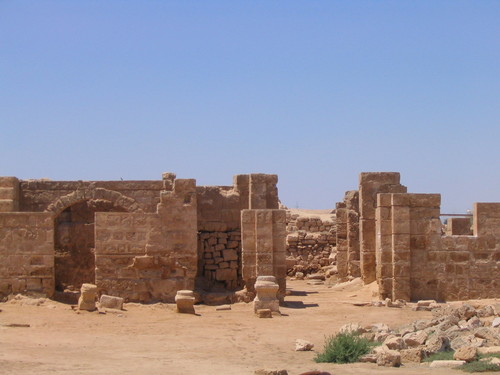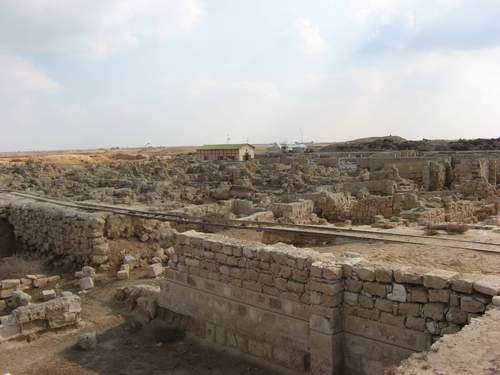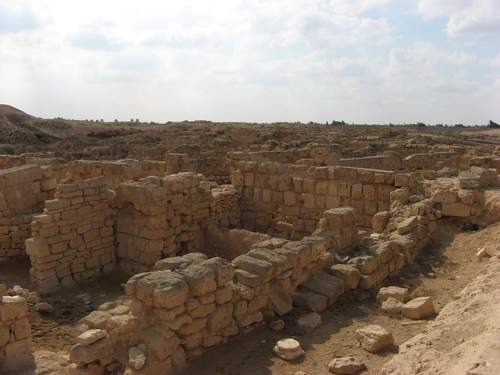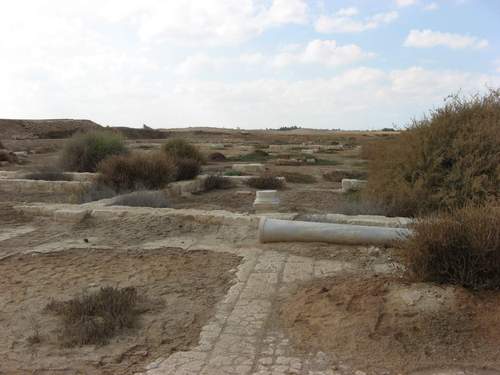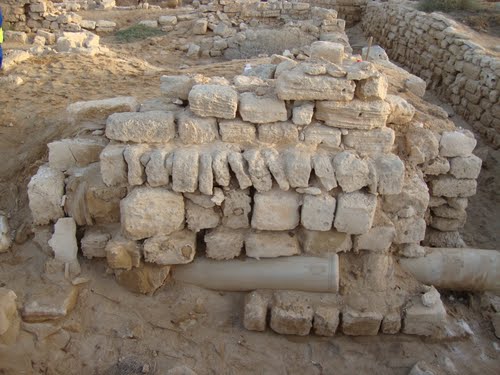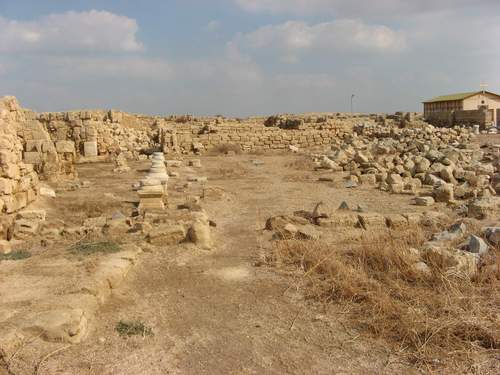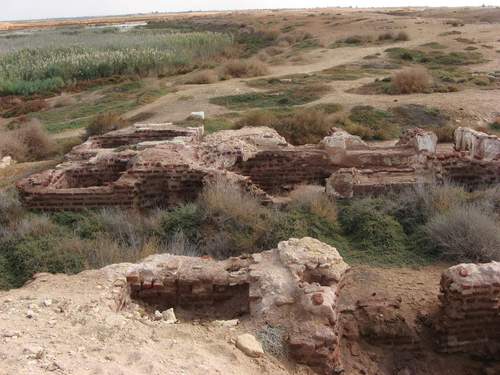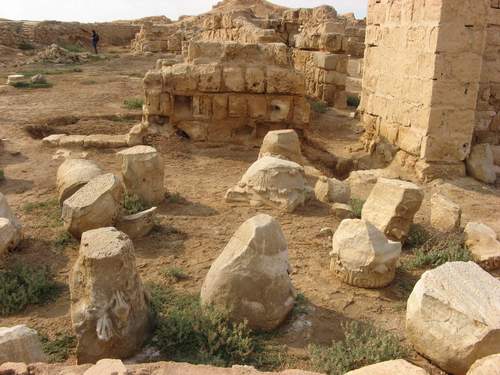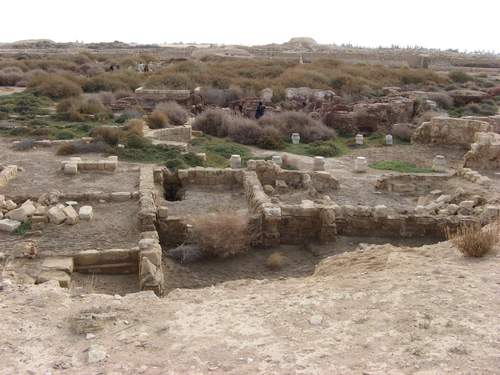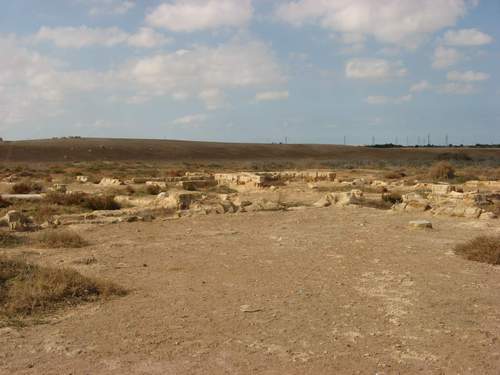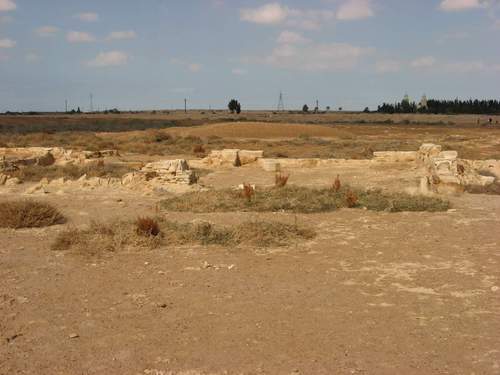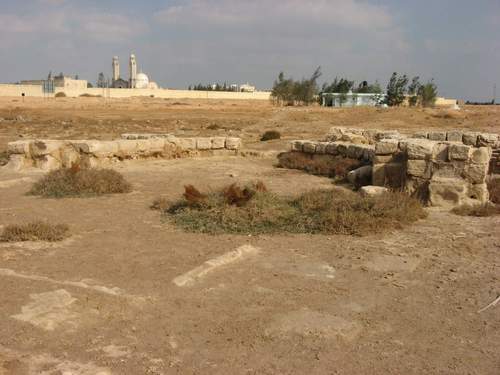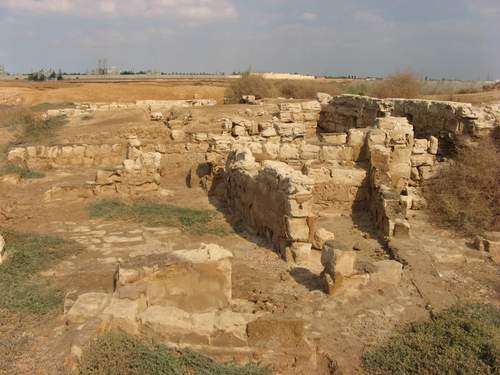Abu Mena was a town, monastery complex and Christian pilgrimage center in Late Antique Egypt, about 45 km (28 mi) southwest of Alexandria. Its remains were designated a World Heritage Site in 1979. There are very few standing remains, but the foundations of most major buildings, such as the great basilica, are easily discernible.
Recent agricultural efforts in the area have led to a significant rise in the water table, which has caused a number of the site's buildings to collapse or become unstable. The site was added to the list of World Heritage in Danger in 2001. Authorities were forced to place sand in the bases of buildings that are most endangered in the site.
History
Menas of Alexandria was martyred in the late 3rd or early 4th century. Various 5th-century and later accounts give slightly differing versions of his burial and the subsequent founding of his church. The essential elements are that his body was taken from Alexandria on a camel, which was led into the desert beyond Lake Mareotis. At some point, the camel refused to continue walking, despite all efforts to goad it. This was taken as a sign of divine will, and the body's attendants buried it on that spot.
Most versions of the story state that the location of the tomb was then forgotten until its miraculous rediscovery by a local shepherd. From the Ethiopian Synaxarium (E.A.W. Budge, trans.):
And God wished to reveal the [place of the] body of Saint Mînâs. And there was in that desert a certain shepherd, and one day a sheep which was suffering from the disease of the scab went to that place, and dipped himself in the water of the little spring which was near the place, and he rolled about in it and was healed straightway. And when the shepherd saw this thing, and understood the miracle, he marvelled exceedingly and was astonished. And afterwards he used to take some of the dust from that shrine, and mix it with water, and rub it on the sheep, and if they were ill with the scab, they were straightway healed thereby. And this he used to do at all times, and he healed all the sick who came to him by this means.Word of the shepherd's healing powers spread rapidly. The synaxarium describes Constantine I sending his sick daughter to the shepherd to be cured, and credits her with finding Menas' body, after which Constantine ordered the construction of a church at the site. (Some versions of the story replace Constantine with the late-5th century emperor Zeno, but archaeologists have dated the original foundation to the late 4th century). By the late 4th century, it was a significant pilgrimage site for Christians who sought healing and other miracles. Menas flasks are a particular type of small terracotta ampullae sold to pilgrims as containers for holy water or holy oil which are found very widely around the Western Mediterranean, dating roughly from the century and a half before the Muslim conquest. They are cheaply made but impressed with images of the saint that are of significance in the study of iconography; it is presumed they were made around the city.
During the reign of Arcadius, the local archbishop observed that crowds were overwhelming the small church. He wrote to the eastern emperor, who ordered a major expansion of the facilities, the first of three major church expansions which would eventually take place. By the end of the Late Antique period, Abu Mena had become the leading pilgrimage site in Egypt.
Abu Mena was destroyed by the Muslim conquest of the mid-7th century.


